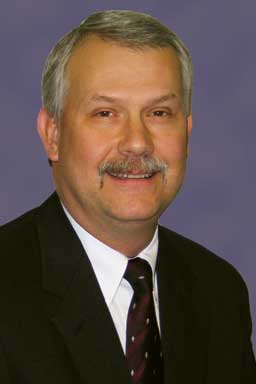Executive Director’s Message: External forces – Nov 2013
AASV thanks Industry Support Council member dsm-firmenich Animal Nutrition & Health:
Reality is that which, when you stop believing in it, doesn’t go away.
Philip K. Dick
Reality can be intimidating. It can’t be ignored or avoided for long. It can only be recognized and acknowledged for what it is and then dealt with to the best of our abilities. Today the reality of pork production is beset with a number of external forces that are coming to bear on producers and veterinarians. I classify these as external since their source is outside the control of veterinarians and producers. However, it is up to veterinarians and producers to take the necessary actions to deal with reality. These forces have already had or are about to have an effect on a number of areas of production and veterinary medicine.
The US Food and Drug Administration (FDA) is poised to decrease the availability of antibiotics for use in feed for growth promotion and increased feed efficiency. This will be done voluntarily at first but I have no doubt that the FDA will take regulatory action to remove these products from the marketplace. The FDA is also preparing to place more accountability on veterinarians as feed antibiotics become re-classified as Veterinary Feed Directive (VFD) drugs. Accompanying this reality will be increased record-keeping requirements as well as new scrutiny on the formal relationship between veterinarians and clients. The pressure to decrease the use of antibiotics in pigs and other farm animals is not likely to lessen in coming years.
Another external force on pork production is in the area of on-farm audits for the assurance of pig welfare. Increasing scrutiny from packers and their customers (not necessarily consumers) is forcing the audits onto farms. A number of audits are currently being used, but there can be differences in requirements between packers. Producers who sell to multiple packers face the reality of having multiple audits and multiple farm visits by auditors. There are a number of details yet to be worked out pertaining to issues over the frequency of audits, the selection of farms to be audited, the stage of production to be audited, the cost of the audits, the biosecurity of audited farms, and much more.
The debate also continues over the use of individual gestation stalls for sow housing. The animal rights activists are ever-present in their efforts to abolish animal agriculture, and sow housing is a leverage point. It is alarming how readily major restaurant chains and other retailers were convinced that stalls were bad and pens were good. It seems a certainty that they never stopped to consider the impacts felt on the farm by both the animals and the farmer. These same retail businesses may themselves run into the reality that stall-free pork may not be readily available in the quantity or low price they desire.
One of the other external forces to be dealt with in animal welfare is the emergence of so-called “experts” in animal welfare, who in fact have little or even no practical, hands-on experience with farm animals. Whether on a farm or in a laboratory setting, I believe it to be common sense for an expert to have observed and worked with actual animals. Expertise in animal welfare is not achieved by merely learning from a book or reading research reports. First-hand knowledge is required to balance and complement study and research. The problem arises when “experts” make animal welfare recommendations that are neither practical nor truly improve well-being, and may in reality have unintended consequences that compromise the animals’ welfare. Neither on-farm animal welfare nor expert opinions should ever be merely academic exercises!
Not all external forces come in the forms previously mentioned. Porcine epidemic diarrhea virus (PEDV) has proven to be a significant external force on the US pork industry. Not previously seen in the United States, this virus has wreaked havoc on individual farms in the form of high mortality in baby pigs. On a more macro scale, it has generated a wake-up call for veterinarians, producers, federal animal-health officials, and state animal-health officials. The biosecurity of the national swine herd is in doubt, begging the question, “How did PEDV enter a number of geographically diverse herds in a short period of time?” The lateral spread of the virus has revealed the weaknesses associated with transport (ie, trucks and trailers). The emergence of PEDV has also strengthened the resolve that a national surveillance system is desperately needed.
A great deal of time and effort has been expended by AASV members, officers, committees, working groups, and staff to meet the challenges of each of the forces above. Much of this has been through an industry-wide approach that combines AASV with the National Pork Board and the National Pork Producers Council. I don’t expect to see a lessening of external forces in the future. These forces have an additive effect on the needs of the pork industry as well as on the demand for resources.
The AASV will continue to best serve the interests of our members as they face the reality of swine practice and the production of pork. The past months of dealing with external forces, especially PEDV, has compelled me to consider that a new model may be needed for the way AASV responds to emerging issues, either external or internal to swine practice. I am open to suggestions and input on how to structure this model. In the coming months I will be posing the question to our board of directors as well as our committees for consideration. Stay tuned.
